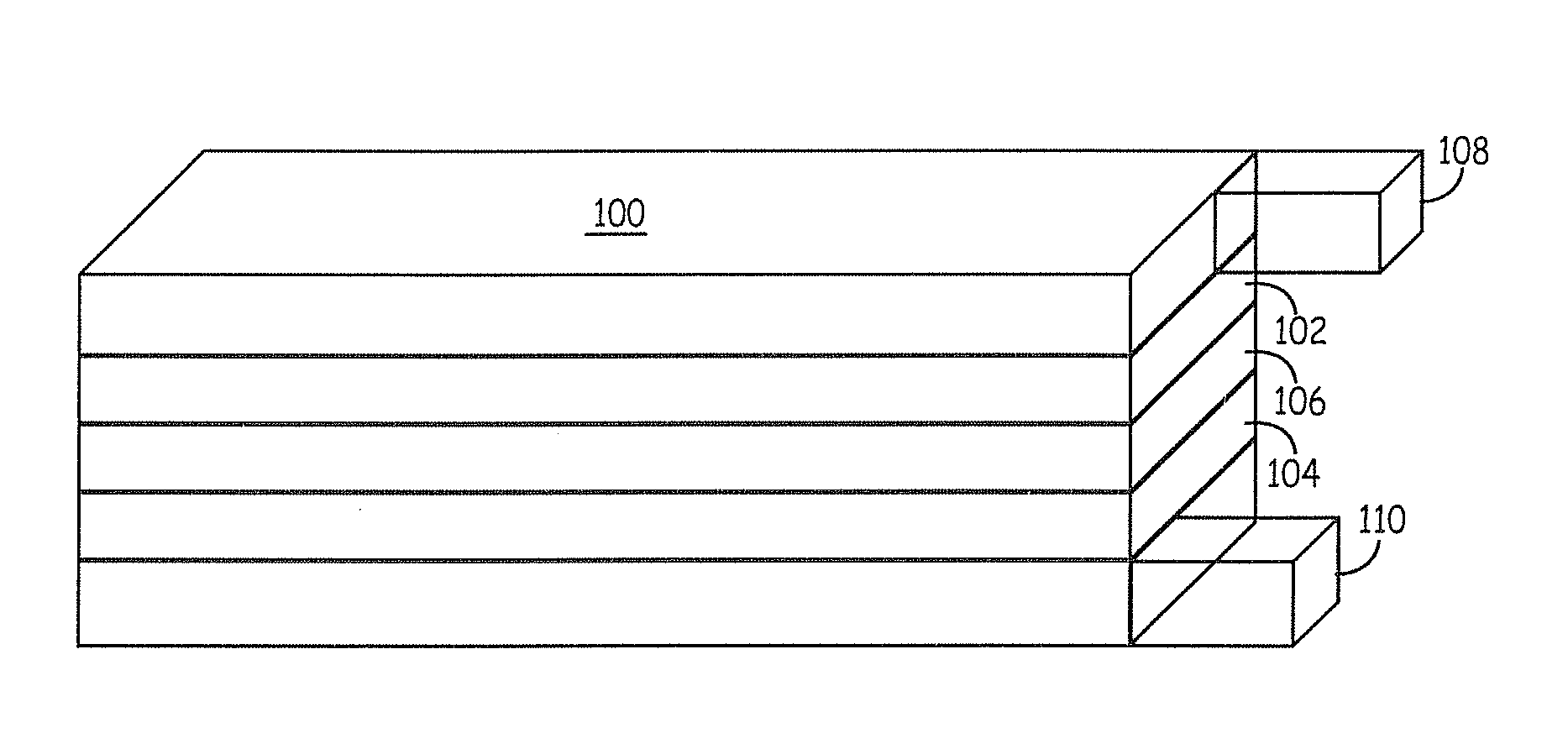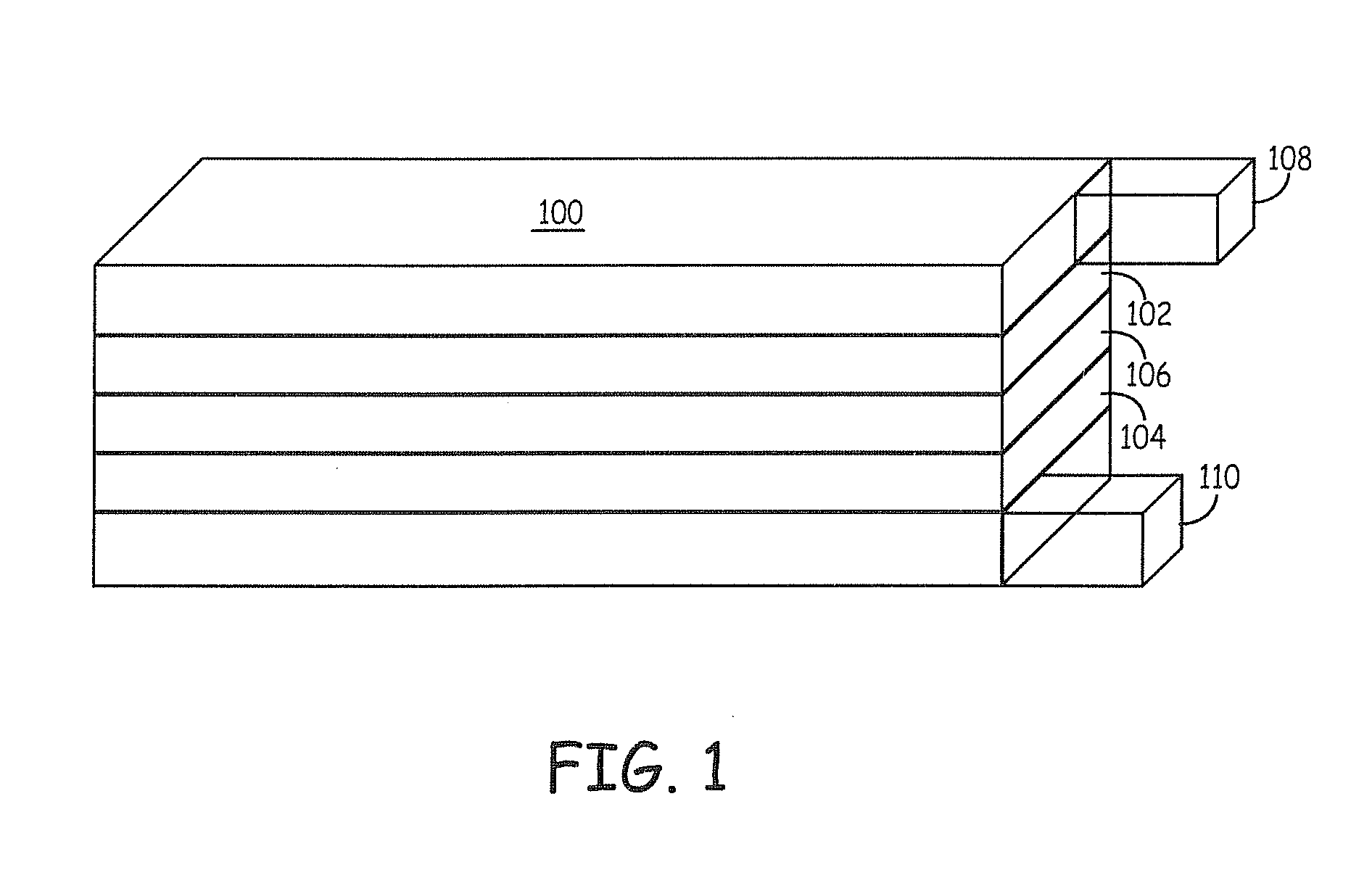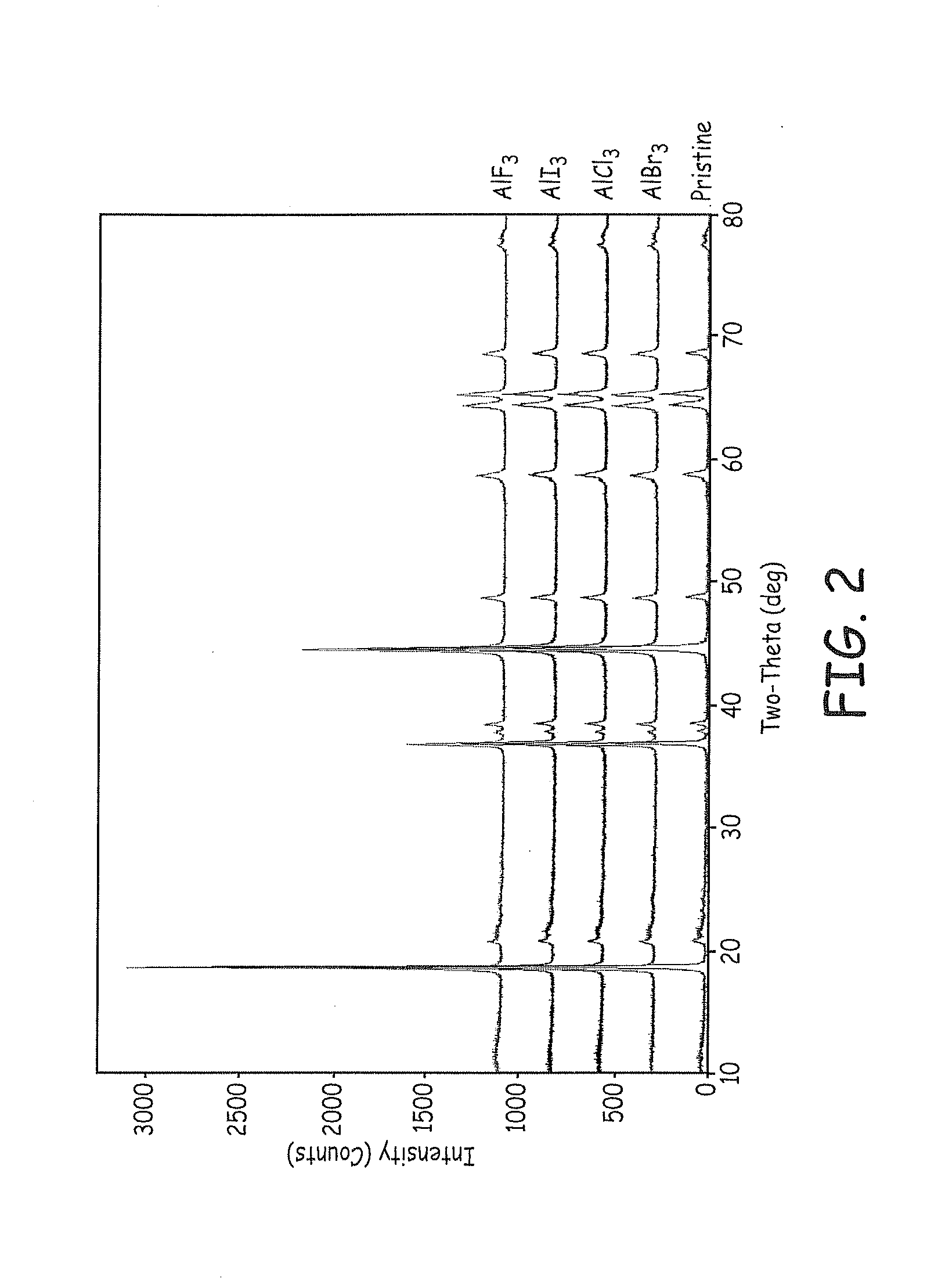Metal halide coatings on lithium ion battery positive electrode materials and corresponding batteries
a positive electrode material and lithium ion battery technology, applied in the direction of cell components, electrochemical generators, transportation and packaging, etc., can solve the problems of low energy density of battery cells, no significant improvement in energy density,
- Summary
- Abstract
- Description
- Claims
- Application Information
AI Technical Summary
Problems solved by technology
Method used
Image
Examples
example 1
Synthesis of a First Cathode Active Material
[0107]This example demonstrates the formation of a desired positive electrode active material using a carbonate or hydroxide co-precipitation process. Stoichiometric amounts of metal precursors were dissolved in distilled water to form an aqueous solution with the metal salts in the desired molar ratios. Separately, an aqueous solution containing Na2CO3 and / or NH4OH was prepared. For the formation of the samples, one or both solutions were gradually added to a reaction vessel to form metal carbonate or hydroxide precipitates. The reaction mixture was stirred, and the temperature of the reaction mixture was kept between room temperature and 80° C. The pH of the reaction mixture was in the range from 6-12. In general, the aqueous transition metal solution had a concentration from 1M to 3M, and the aqueous Na2CO3 / NH4OH solution had a Na2CO3 concentration of 1M to 4M and / or a NH4OH concentration of 0.2-2M. The metal carbonate or hydroxide prec...
example 2
Formation of Aluminum Halide Coated Metal Oxide Materials from Example 1
[0110]The lithium metal oxide (LMO) particles with the first composition prepared in Example 1 were coated with a thin layer of aluminum halide (AlX3) using a solution-based method, where X can be F, Cl, Br, or I. The aluminum fluoride coated samples were prepared for comparison with the non-fluoride aluminum halides. The aluminum halide coated samples with the first active composition from Example 1 were used for the formation of lithium-based batteries as described in subsequent examples.
[0111]For a selected amount of aluminum halide coating (0.05 mole percent coating), an appropriate amount of saturated solution of aluminum nitrate was prepared in an aqueous solvent. The metal oxide particles were then added into the aluminum nitrate solution to form a mixture. The mixture was mixed vigorously for a period of time to homogenize. The length of mixing depends on the volume of the mixture. After homogenization, ...
example 3
Coin Cell Batteries with Aluminum Halide Coated First Active Composition from Example 2
[0113]The aluminum halide coated samples from example 2 based on the first active composition described in example 1 above were used to test the performance of coin cell batteries. The coin cells were assembled following the procedure outlined above with positive electrode active materials with a coating based on one of the four different aluminum halides or without a coating. The first cycle charge and discharge specific capacity of the batteries are plotted in FIGS. 5-8 for batteries with pristine i.e. un-coated LMO and LMO coated with 0.5 mole percent AlX3 (X=F, Cl, Br, or I) at a discharge rate of 0.1 C between 2.0 and 4.6 V.
[0114]The first cycle discharge capacity for pristine or un-coated LMO was approximately 261 mAh / g. In comparison, the first cycle discharge capacity for AlF3 coated LMO plotted in FIG. 5 was approximately 275 mAh / g, about 15 mAh / g above the value of pristine LMO. The firs...
PUM
| Property | Measurement | Unit |
|---|---|---|
| average voltage | aaaaa | aaaaa |
| average voltage | aaaaa | aaaaa |
| temperature | aaaaa | aaaaa |
Abstract
Description
Claims
Application Information
 Login to View More
Login to View More - R&D
- Intellectual Property
- Life Sciences
- Materials
- Tech Scout
- Unparalleled Data Quality
- Higher Quality Content
- 60% Fewer Hallucinations
Browse by: Latest US Patents, China's latest patents, Technical Efficacy Thesaurus, Application Domain, Technology Topic, Popular Technical Reports.
© 2025 PatSnap. All rights reserved.Legal|Privacy policy|Modern Slavery Act Transparency Statement|Sitemap|About US| Contact US: help@patsnap.com



